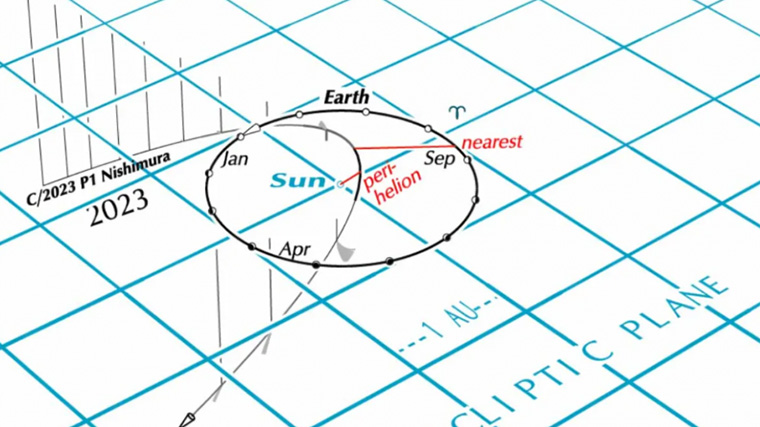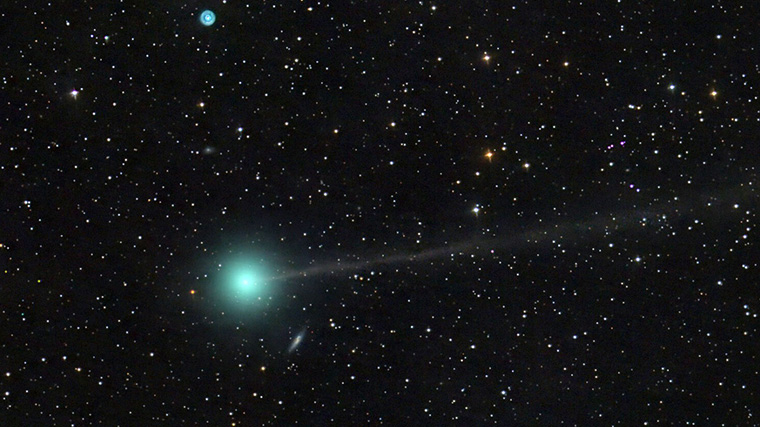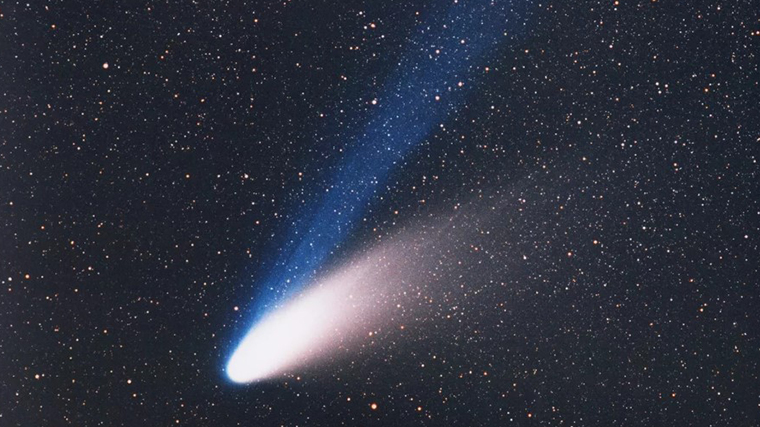New comet discovered
The mysterious green comet C/2023 P1 (Nisshimura) is flying towards Earth. It is named after the Japanese astronomer Hideo Nishimura, who first discovered it in early August 2023.
The space object will become clearly visible from our planet on September 7th. After that, within 10 days, it will become more and more noticeable.
It will reach its peak brightness on September 17, when it will be at a minimum distance from the Earth – 34 million kilometers. In good circumstances and in clear weather on this day, earthlings will be able to see it even with the naked eye.
The best time to watch is before dawn. The reference points are as follows: from the end of August to the beginning of September, the comet will fly through the zodiac constellations Gemini and Cancer, in mid-September it will pass through the constellation Leo, and in the second half of the month it will be in Virgo.
Given the unpredictability of comets, it is not possible to determine in advance the degree of visibility of Nishimura with the naked eye in September, but there is a possibility that this will happen. Approaching the Sun, the comet evaporates and a very bright gas and dust tail begins to grow in it.
The orbital eccentricity of C/2023 P1 Nishimura is slightly greater than 1. This means that it was ejected from the Oort cloud – the “home of comets” and first entered the inner solar system.
Why is she green?
Her tail glows blue-green.
As a comet — a clump of ice and dust — approaches the Sun, it heats up and its ice turns into gas, creating a fuzzy atmosphere known as a coma. The atmosphere includes carbon-based molecules that are bombarded by the Sun’s ultraviolet light, breaking it apart and removing the outer parts. The result is a simple but fragile dicarbon molecule known as dicarbon or C₂ in chemical notation. It’s two carbon atoms bonded together.
Due to the quantum nature of the universe, an excited molecule returns to its ground state by emitting a photon. For diatomic carbon, the photon is usually a green light photon. This explains the green color of comets.
In many comets, only the head glows green. There is usually no material for highlighting the tail. C/2023 P1 Nishimura is a true gift, her tail is dyed green. The abundance of carbon dioxide is further proof of the freshness of the comet.
How to observe it?
The best way to observe comet C/2023 P1 Nishimura is to use binoculars or a low-power telescope and try to observe it before dawn this week. The Comet Observer Database (COBS) is a very useful source of information about the position of a comet in the sky during its transit.
Although the limit of visibility to the naked eye is generally considered to be +6, comets are widespread objects. Comets such as 2020’s F3 Neowise become distinguishable from other foreground objects only at around +3 magnitude. On its closest approach to Earth in mid-September, the comet will reach magnitude +3 or +2, so it may be visible to the naked eye. Unfortunately, at this time it will be getting closer and closer to the Sun, and therefore it will be very difficult to detect.
Is a comet dangerous for earthlings?
As it approaches the Sun for the first time, P1 Nishimura could be particularly active.

On September 13, the closest approach to the Earth will occur at a distance of 78 million miles (127 million kilometers). Perihelion, or closest approach to the Sun, will be reached on September 18 at a distance of 27 million miles (43.7 million km) from the Sun, within the orbit of Mercury.
Dispelling the alarm is the fact that on August 15-16, 2023, the comet was already orbiting the Earth. Comet Nishimura is moving so fast that it will reach the orbit of Venus in just a few days … by August 27, 2023.
The comet will visit us only once. Shortly thereafter, the Sun will push it out of its system. After that, the comet will begin its long journey outside the solar system.
NASA thinks otherwise
As of August 21, 2023, NASA/JPL has performed new orbital calculations that show that Comet Nishimura orbits the Sun every 202 years, suggesting that it is a “local” comet from our solar system and not an interstellar comet.
Welcome green comet in 2225.
Some details may be updated as new observations allow scientists to better refine the comet’s orbit.
Credit рhoto:
https://skyandtelescope.org
https://earthsky.org

